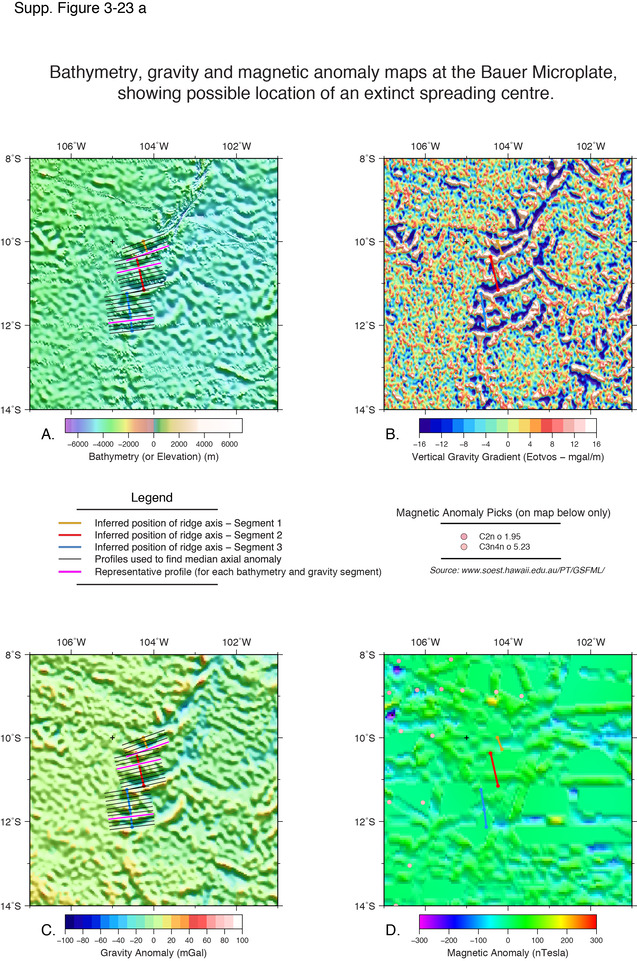| Ocean: | Pacific |
| Spreading center type: | Microplate spreading ridge |
| Time of cessation: | 6 Ma, chron C3An1n (Eakins and Lonsdale, 2003) |
| Subsequent active spreading centre: | East Pacific Rise |
The Bauer Scarp is an oceanic structure located between the Galapagos Rise to the east and the East Pacific Rise to the west, within a region of complex tectonic fabric. Some confusion has arisen regarding the nomenclature related to the structure and there are various competing theories as to where the former axis of spreading was located. It is generally accepted that a short-lived microplate formed between the Pacific and Farallon plates, that rotated relative to the two major plates and this is referred to as the Bauer microplate (Eakins and Lonsdale, 2003). Spreading is thought to have been active simultaneously on the Galapagos Rise spreading ridge and a second propagating ridge segment to the west that is considered here as the Bauer Scarp (Eakins and Lonsdale, 2003). A third extinct spreading axis may have also been active to the north of Galapagos Rise, referred to as the Annex Rise (Eakins and Lonsdale, 2003), however there is less direct evidence to confirm the presence of an extinct ridge within this part of the crust.
Magnetic anomalies are relatively sparse within this region, however asymmetry of the oceanic crust and the morphology of scarps and sheared zones have been used to generate a detailed study of the tectonic environment (Anderson and Sclater, 1972; Eakins and Lonsdale, 2003).
Eakins and Lonsdale (2003) propose that the Bauer plate was active for a period of 11 Myrs from 17 Ma until 6 Ma. They also define an additional piece to the north of the North Gallego FZ which they term the ‘northern annex’, that they believe formed a fragment of crust ~500 km wide, within a period of 1-2 Myrs.A major plate-boundary reorganization is argued to have been responsible for the extinction of the Galapagos Rise and Bauer spreading ridges (Eakins and Lonsdale, 2003). This is thought to have been related to fragmentation of the Farallon plate and it is interesting that both to the north and south of the Cocos-Nazca ridge multiple ridge reorganizations occurred before the East Pacific Rise and related systems developed a stable configuration. The microplate is argued to have formed from propagation across Pacific-Farallon fracture zones (Eakins and Lonsdale, 2003).
Anderson, R.N. and Sclater, J.G., 1972, Topography and evolution of the East Pacific Rise between 5 S and 20 S. Earth and Planetary Science Letters, 14, pp.433–441.
Eakins, B.W. and Lonsdale, P.F., 2003. Structural patterns and tectonic history of the Bauer microplate, Eastern Tropical Pacific, Marine Geophysical Researches, 24(3-4), pp.171-205.


